While designing my daughter’s new room, it quickly became apparent that we needed a place to put all of her books. If there’s one thing I will gladly buy my children, it’s books, and so we have collected a lovely little library with several titles given as gifts from family and friends.
I wanted to keep the books within her reach so she could peruse at her leisure, but I also wanted something she couldn’t climb or pull down on herself like a traditional bookcase. I came across this open-backed wooden shelving unit on Restoration Hardware that was perfect, aside from the price. It retails for $279.
The framework seemed simple enough… so in my usual fashion, I struck out to DIY something similar for a LOT less. I’m happy to report this designer look was built at a fraction of the cost — a mere $70 for materials with the tools I already had on-hand. Here’s how:
Tools & Materials List
- (1) 1″ x 6″ x 8′ select pine board
- (2) 1″ x 6″ x 6′ select pine boards
- (2) 1″ x 3″ x 6′ select pine boards
- (4) 3/8″ x 3″ x 3′ select pine boards
- (2) 7/8″ x 8′ white hardwood trim with ivy accent
- miter saw
- router with 1/2″ straight bit {or table saw with dado blade}
- level
- sander / sand paper
- wood glue
- wood filler / joint compound
- nail gun / brads
- white paintable caulk
- paint / roller / brush
- stud finder
- (4) 3″ drywall screws
- drill
{step 1} Cut boards to size.
(A) For the sides: cut the 1″ x 6″ x 8′ board in half to yield two (2) 48″ boards. Miter the tops at a 25-degree angle. {Feel free to choose an angle based on your own preference.}
(B-D) For the shelves: cut the 1″ x 6″ x 6′ boards to yield the following. These are the bottoms of each shelf.
- One (1) board at 34-1/2″ for the bottom of the bookshelf.
- Three (3) boards at 35-1/4″ for the shelves that slide into the dado cuts.
Next, cut the 1″ x 3″ x 6′ boards to yield four (4) 34-1/2″ boards that will serve as the backs of each shelf.
(E) For the front caps: no cutting necessary; they are already to size.
(F) For the bars: cut the decorative trim to yield four (4) 36″ pieces. Given that wood bends/warps, cut the bars after assembly, measuring along each point of attachment and cutting accordingly.
{step 2} Cut dados into the sides.
Our table saw isn’t the best and we don’t own any dado blades, so I used the router we got the Chief for Father’s Day last year to make dado cuts for the shelves. I chose to place each shelf inside a dado for a cleaner, smoother finish. With dados, there are no exposed end grains and the overall unit is sturdier.
Start by clamping the two side pieces (A) together side-by-side. In doing so, you can cut through both boards at the same time and at the same measurement.
Using a level as a guide, cut a 3/4″ wide dado with a router fitted with a 1/2″ straight bit. After the first pass, move the guide over a 1/4″ and cut again. The dados should be 3/8″ deep.
These are the measurements I used to space my dados evenly: first dado at 12″ from the bottom, the second at 24″ and the third at 36″.
{step 3} Sand all pieces to ready for paint.
It’s not a glamorous job, but it is necessary and you’ll thank yourself for it when you’re done. Put on some good music and go to town!
{step 4} Assemble bookshelf.
Assemble with the back of the bookshelf laying on a flat surface to ensure it is flush, flat and square.
Starting at the bottom of one side board (A), apply wood glue and join with the bottom shelf board (B). Bring edges flush and secure in place with 1″ brads driven in by a pneumatic nail gun.
Apply glue to the first dado, — use an acid brush to spread the glue on all three sides — insert shelf (C) and secure with nail gun. It’s okay if there’s a little wiggle room; you can caulk up any extra space before painting. Repeat until all shelves are attached. Continue on to the other side, gluing shelves in place and securing with brads.
Lastly, apply glue to the ends and bottoms of the shelves’ backs (D). Place on top of the installed shelf boards (C) and in between the two sides (A). Secure with 2 brads along the sides and 4-5 brads underneath. Let dry overnight.
It should look like this at this point:
{step 5} Attach the face caps and bars.
To keep books, stuffed animals and toys in their place and to cover the dado cuts, you’ll need to attach the front pieces.
Apply wood glue to the ends of the front caps (E) and attach to the front of the bookshelf, covering the dado cuts. Secure in place with a couple brads from a nail gun. Using the same method, attach the bars (F) to the front of the bookshelf, about 2-1/2″ above the front caps (E).
Based on my personal preference, I placed the bottom cap first — making the edges flush — and then attached the others with about a 1/2″ lip below the shelf.
{step 6} Fill and sand.
Fill all nail holes with wood filler. Fill spaces between dados and shelves with caulk. Let dry.
Give the bookshelf a quick once over with the sander, taking care to remove any excess wood filler and/or glue. Wipe clean with damp rag.
{step 7} Paint.
Give your bookshelf 2-3 coats of paint.
This is where I wish I had a paint sprayer. I used a brush-roller combination to get into all the tight spots, but it would have been done in a flash if I only had a sprayer… I started with a coat of Kilz latex primer to help with coverage and then finished with two coats of Sherwin-Williams satin interior paint in Creamy White to match my daughter’s board and batten wall. Let the paint dry completely before hanging.
{step 8} Hang and enjoy!
Using a stud finder, mark the studs on the wall where you’d like to attach the bookshelf. Next, drill two through holes in the back of the first shelf corresponding with the studs. Ensure the bookshelf is level and attach to the wall by driving 3″ drywall screws slightly below the surface of the board. Repeat the process on the bottom shelf.
Fill and cover screw holes with wood filler or joint compound, sand lightly to smooth and touch-up with paint. Step back and admire your handiwork!
What are some of your favorite children’s books?
Any titles I should add to her bookcase?
Thanks for reading! — v.
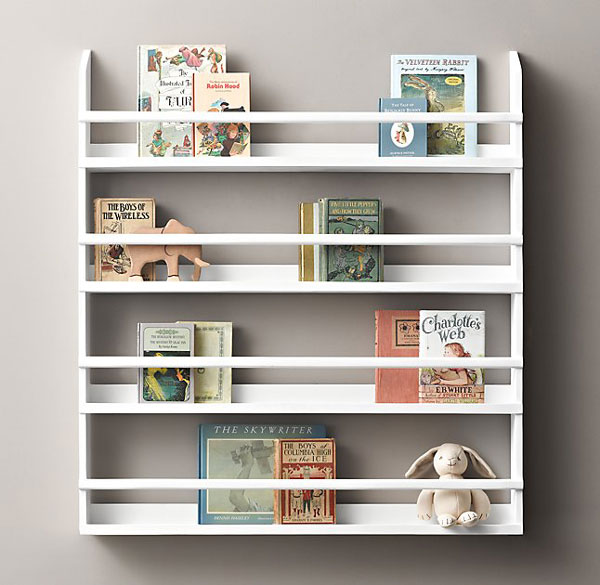
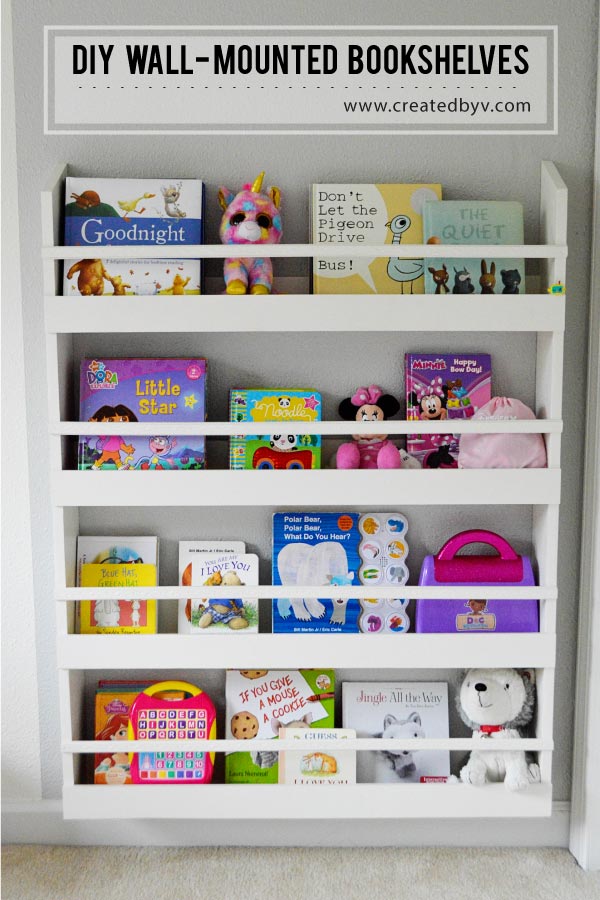
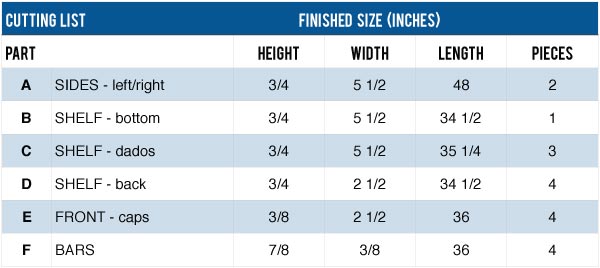



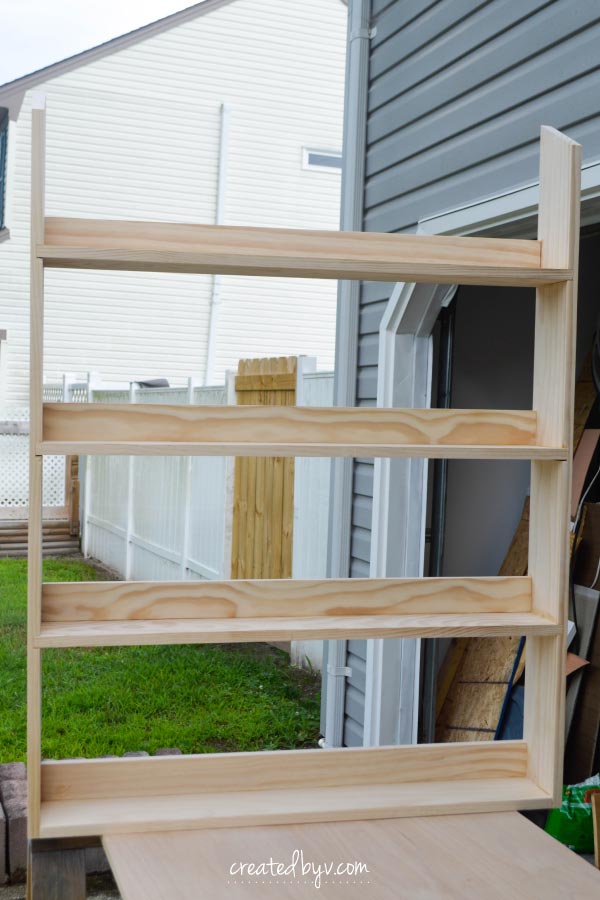
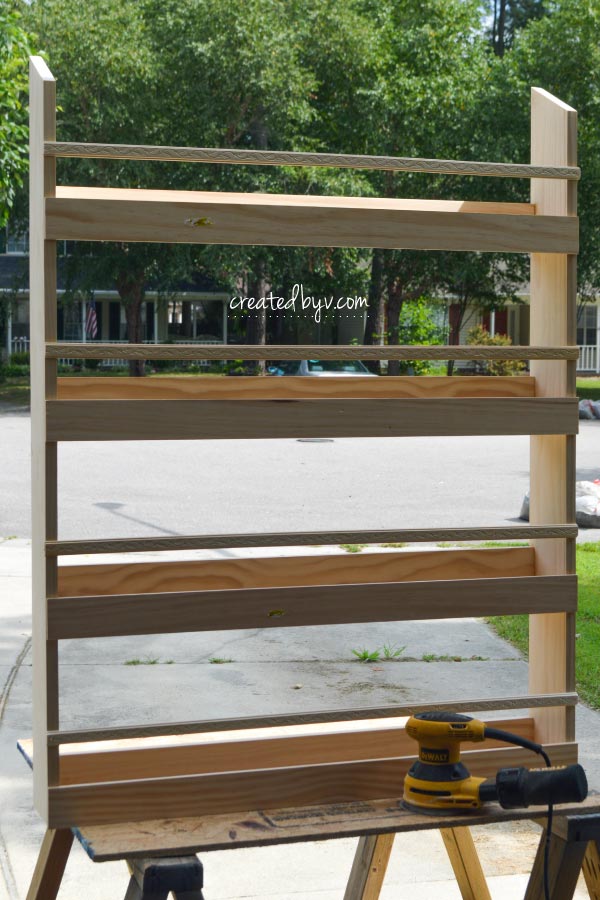
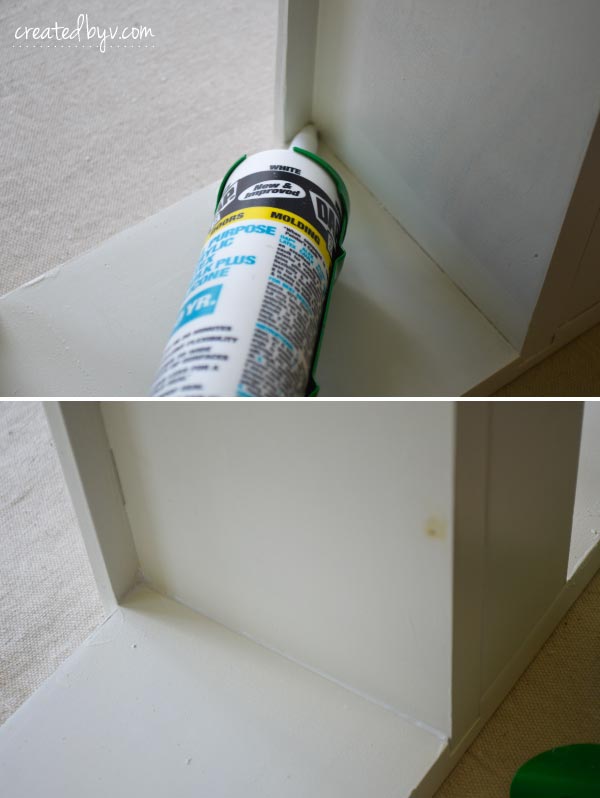
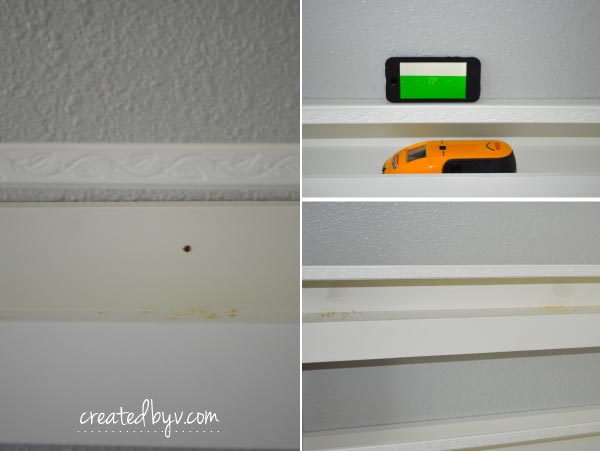
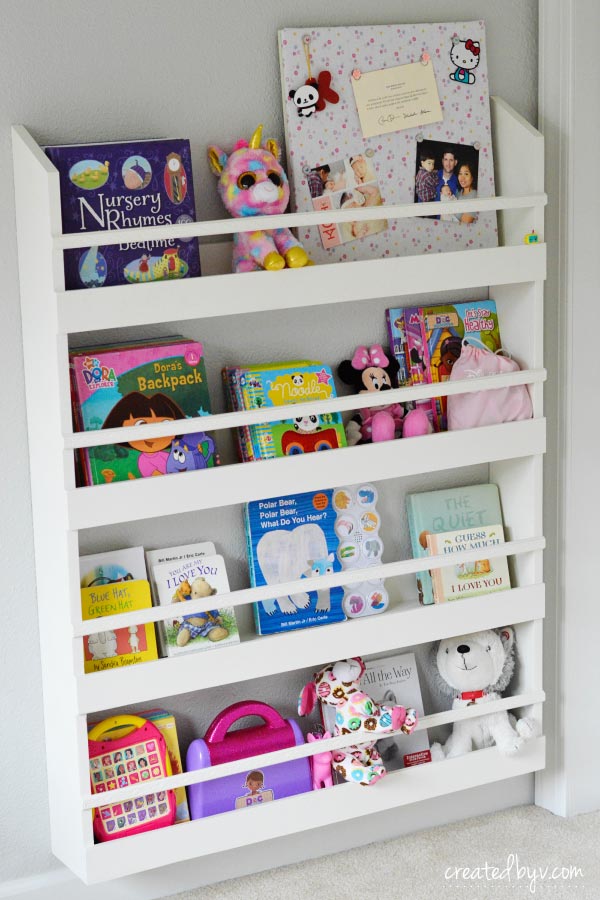
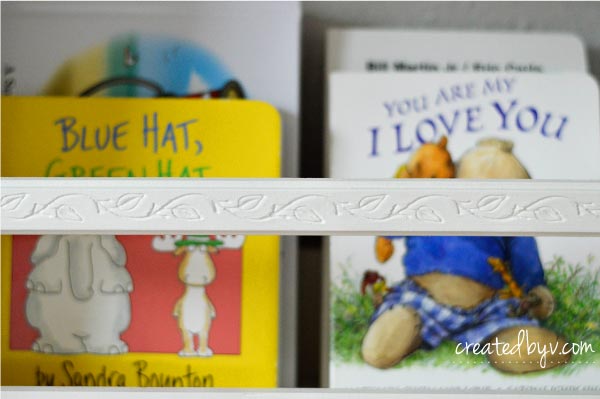
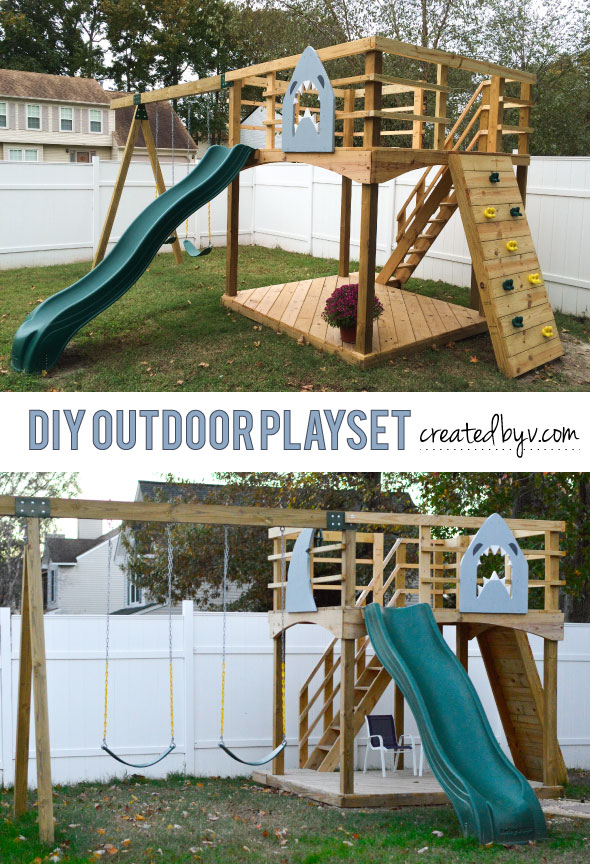
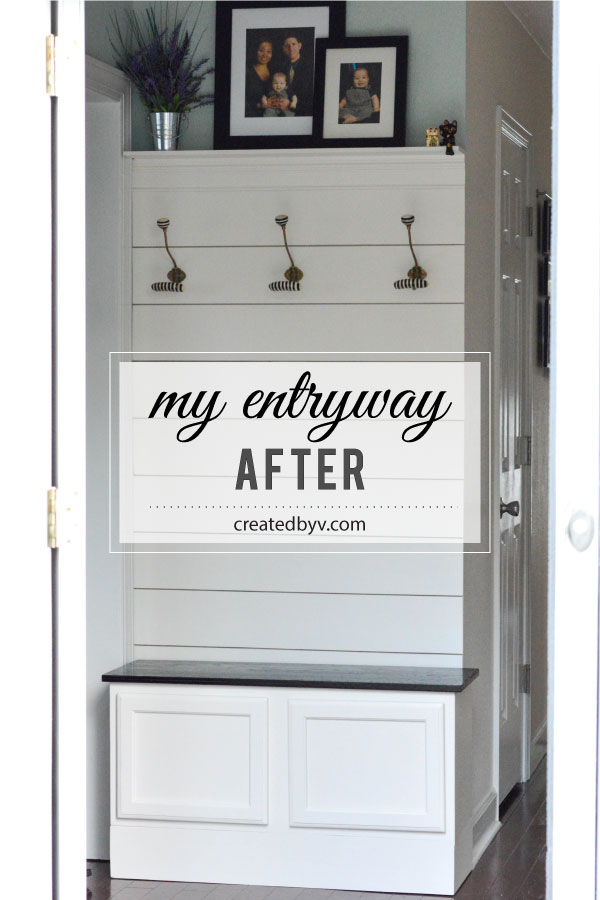
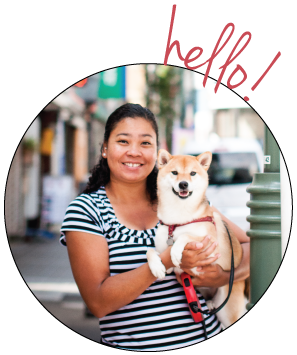

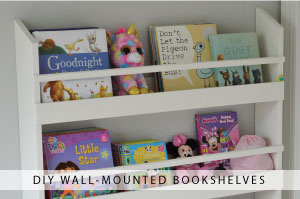

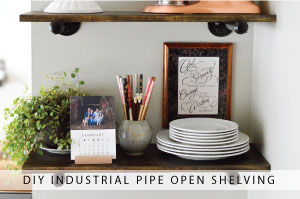
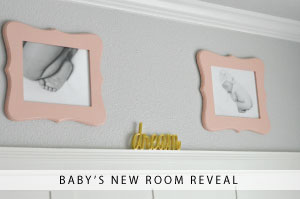

A classy bookshelf that can grow up with her. But now I really want to read “Don’t Let the Pigeon Drive the Bus”!
Thanks, Kathleen! Yes, you must — the pigeon and his shenanigans are great fun!
Very nice! I love a wall mounted bookshelf…or any otherbookshelf for that matter!
Thanks, Lexie! I agree with you: a bookshelf is a wonderful addition to any room!
That is a great inspiration for a simple solution to small spaces or just a place for easy access to little hands. Great reading!!!!
Thanks, Lea! Behind the door was my original thinking, but I didn’t want to mess up the board & batten wall, so this worked out perfectly.